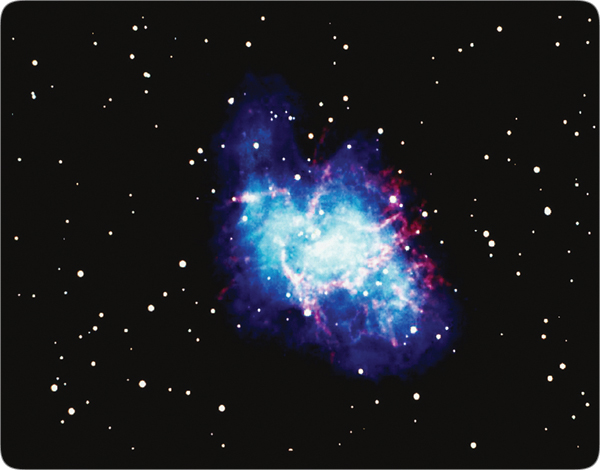Show your support by donating any amount. (Note: We are still technically a for-profit company, so your
contribution is not tax-deductible.)
PayPal Acct:  Feedback:
Feedback: 
Donate to VoyForums (PayPal):
| [ Login ] [ Contact Forum Admin ] [ Main index ] [ Post a new message ] [ Search | Check update time | Archives: 1, 2, 3, 4, 5, 6, 7, 8, 9, [10] ] |
In galaxies similar to our Milky Way Galaxy, a star will explode violently every 26 years or so (a). These explosions, called supernovas, produce gas and dust that expand outward thousands of miles per second. With radio telescopes, these remnants in our galaxy should be visible for a million years. However, only about 7,000 years’ worth of supernova debris are seen (b). So, the Milky Way looks young.

Figure 34: The Crab Nebula. In A.D. 1054, Chinese observers (and perhaps Anasazi Indians in New Mexico and Arizona) witnessed and described a supernova. It was visible in daylight for 23 days and briefly was as bright as a full moon. Today, the remnants from that explosion comprise the Crab Nebula.
a. “An application of the present results to the [Milky Way] Galaxy yields one supernova per 26 (± 10 estimated error) years in very good agreement with the evidence from historical supernovae.” G. A. Tammann, “On the Frequency of Supernovae as a Function of the Integral Properties of Intermediate and Late Type Spiral Galaxies,” Astronomy and Astrophysics, Vol. 8, October 1970, p. 458.
• A more recent technique that surveyed thousands of galaxies, including smaller galaxies, concluded that
... the time between [supernova] explosions is 100 years or more.” Michael S. Turner, “Yes, Things Really Are Going Faster,” Science, Vol. 299, 31 January 2003, p. 663.
b. Keith Davies, “Distribution of Supernova Remnants in the Galaxy,” Proceedings of the Third International Conference on Creationism (Pittsburgh, Pennsylvania: Creation Science Fellowship, Inc., 1994), pp. 175–184.
“Where have all the remnants gone?” Astronomy Survey Committee of the National Research Council, Challenges to Astronomy and Astrophysics (Washington, D.C.: National Academy Press, 1983), p. 166.
Evolution requires an old Earth, an old solar system, and an old universe. Nearly all informed evolutionists will admit that without billions of years their theory is dead. Yet, hiding the “origins question” behind a vast veil of time makes the unsolvable problems of evolution difficult for scientists to see and laymen to imagine. Our media and textbooks have implied for over a century that these almost unimaginable ages are correct. Rarely do people examine the shaky assumptions and growing body of contrary evidence. Therefore, most people today almost instinctively believe that the Earth and universe are billions of years old. Sometimes, these people are disturbed, at least initially, when they see the evidence.
Actually, most dating techniques indicate that the Earth and solar system are young—possibly less than 10,000 years old.
[From “In the Beginning” by Walt Brown]
[
Next Thread |
Previous Thread |
Next Message |
Previous Message
]
|
Forum timezone: GMT-8 VF Version: 3.00b, ConfDB: Before posting please read our privacy policy. VoyForums(tm) is a Free Service from Voyager Info-Systems. Copyright © 1998-2019 Voyager Info-Systems. All Rights Reserved. |